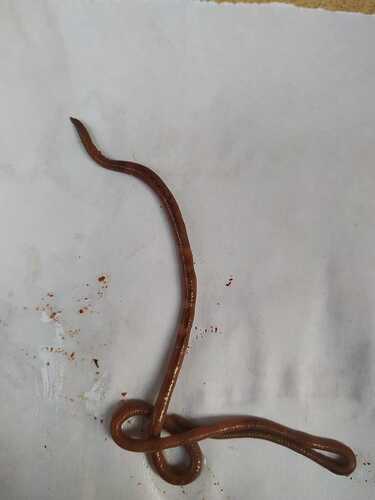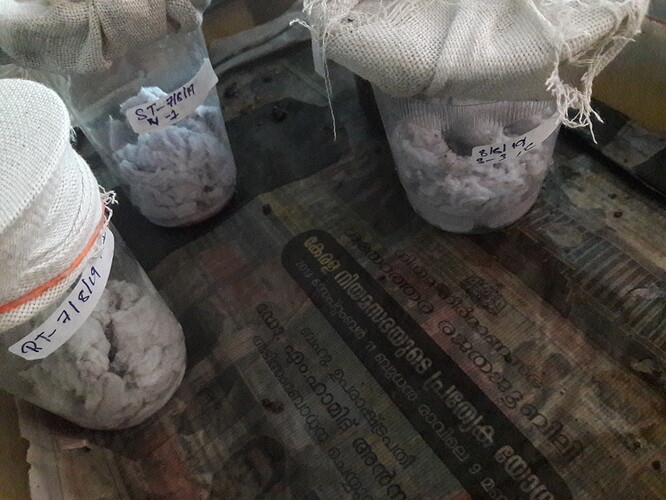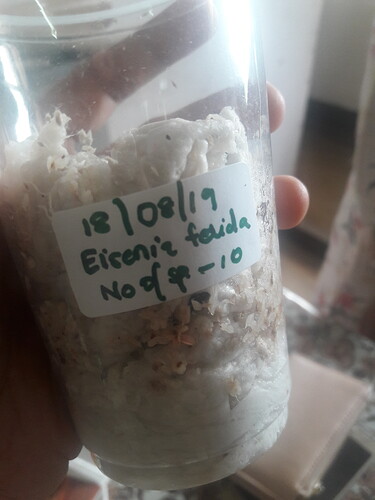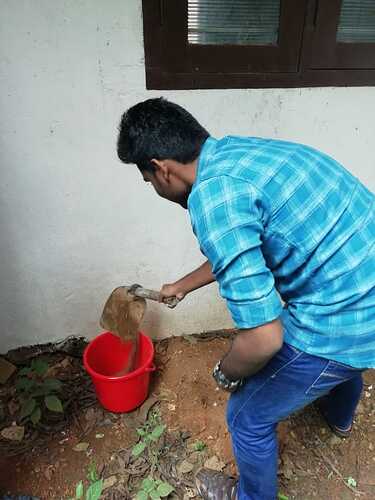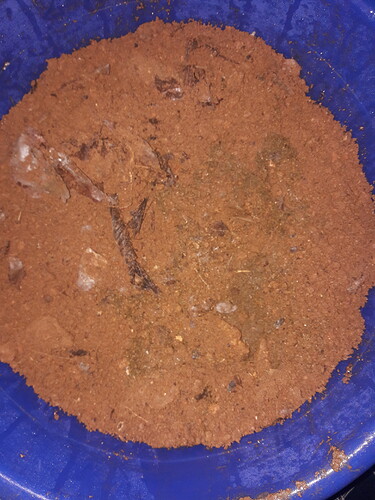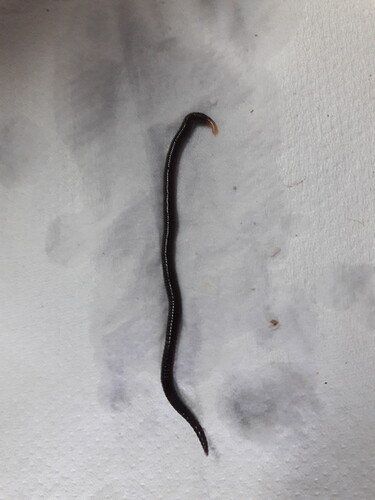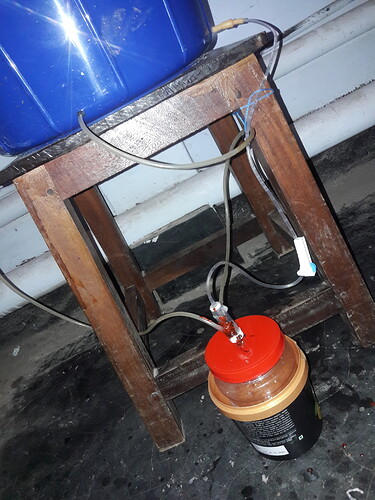We were originally planning to use the abandoned aquarium for our vermipit…but then decided to shift to a bucket as it was easier to handle.
Can you please give a summary on your
Earthworm culture program, how you started, how you proceeded, what you learned from all this, so far from discussing with other and how you are going to proceed to address your
research question/s. Kindly post in all the
groups you are part of . URGENT!
Summary of earthworm culturing:
1/8/2019 - Collection of native earthworms
2/8/2019 - Preparation of cup cultures
3/8/2019 - Transfer of native earthworms into cupcultures
Goof ups - Inadequacy in cup culture methodology which lead to death of few earthworms.
4/8/2019 to to 14/8/2019 - Attempt to identify the native earthworms.
Goof ups - Improper identification of earthworm as we only looked at the number of segments, clitellar region and length. Should have taken more morphological features into consideration.
There was delay due to flood issues…
18/8/2019 - collected 10 Eisenia fetida from G-lab, HBCSE with the help of @baviskarritik , @Vaibhavib99 , @Manaswi and @Hrushikesh
20/8/2019 - collected soil for vermipit
30/8/2019 - Completion of layering in vermipit
10-14 days later…the Eisenia fetida shall be transferred into the vermipit.
Eisena fetida :
We plan to proceed by culturing these Eisenia fetida and our long term objective is the RER assay.
@Arunan
Can you also share some pictures of the eggs of E.fetida and also tell us the reason why are you making vermipits? What’s your long term objective?
There are no Eisenia fetida eggs at the moment…
As vermipits allow earthworms to grow and reproduce faster, we decided to do this. Our long term objective is the RER assay with these eworms. ![]()
Can you tell us how is vermipits encouraging growth of E.fetida? Do you have any reference for it? I am having a design in mind ,just correct me if I go anywhere wrong
Culturing 5 earthworms in cup cultures and 5 in vermipits, say after 10-15 days observe the number of earthworms or even eggs if present, if the number of earthworms is more in vermipits you can be sure that yes vermipits allow earthworms to grow and reproduce faster.
What are your opinions on this ? @Akshitha
Then culturing earthworms in vermipit would be easier is what u r saying??
What is the use of having both vermipit and cup cultures?? @Sjuday2527 @Akshitha
Is it like vermipit is like maintaining stock cultures of earthworms??
Are baba I think u didn’t get it…our discussion was that do earthworms grow more easily in vermipits or in cup cultures coz @Akshitha had mentioned that " As vermipits allow earthworms to grow and reproduce faster, we decided to do this" , so I came up thinking how vermipits are encouraging growth of E.fetida and why not cup cultures… now did you got it ? @lydia
Why is sprinkling of water done while making a vermipit?
Who does the decomposition?
I think detritivores, right?
Who all are present during decomposition?
Since earthworms are detrivores and vermipits provide the earthworm with large quantities of decaying vegetable and fruit matter, as well as the right amount of moisture, they will be able to grow and reproduce faster in this environment.
Cup cultures are simply an easy method for culturing the earthworms and is not as effective as the vermipit. The earthworms, being from the soil, would prefer growing and breeding in the soil over tissue paper.
It is a good idea actually. For now, we have only put two of our earthworms in the vermipit. We’ll check and see if there are any variations in their growth pattern ![]()
@Sjuday2527 was talking about performing a comparitive study to support my claim that earthworms grow and reproduce faster in vermipits ![]()
Decomposition can be considered as the inverse process of production, because it is the metabolic degradation of organic matter ( such as plant residues and animal residues) , into simple organic and inorganic matter. This process is highly dependent on moisture levels. Appropriate moisture levels are required for microorganisms to proliferate and to actively decompose organic matter. In arid environments, bacteria and fungi dry out and are unable to take part in decomposition. And so sprinkling of water is necessary. It is also important to note that earthworms too require moist conditions to survive, hence this is done.
The decomposition is done by the decomposers. Bacteria and fungi form the major group of decomposers. In fact, fungi are able to secrete enzymes that are capable of breaking down virtually all classes of plant compounds. Thus, fungi can decompose substrates such as fresh plant litter and some structural materials (e.g. lignin, chitin and keratin) that are initially almost inaccessible to other decomposers. Due to their small size and large surface to volume ratio, bacteria are able to rapidly absorb soluble substrates and to reproduce quickly in substrate-rich conditions. In substrate-rich environments such as dead animal carcasses, bacteria tend to undergo population “explosions”, thereby become the dominant decomposers.
Reference:
Encyclopedia of Ecology (second edition)
2013, Pages 280-285
Decomposition and Mineralization
L.Wang, P. D’Odorico
https://doi.org/10.1016/B978-0-12-409548-9.00688-6
I didn’t quite get the third question. Could you rephrase that for me? @drishtantmkawale
But how will we know what’s the right amount of moisture which is suitable for earthworms? How could one determine it ? But truly I too now agree that vermipits are better than cup cultures ![]()
![]()
![]() good @Akshitha
good @Akshitha
Earthworms do not have lungs; and therefore, breathe through their moist, mucous-covered skin by a process known as diffusion. Their skin must be kept moist in order for this to work. Dry skin stops the diffusion process. Extremely wet soil can suffocate the earthworm due to excessive water and lack of air.
So the conditions should be just moist, not overly dry or excessively wet. It’d be difficult to point out a particular percentage of soil moisture for we have never had to measure it…we depended on instincts ![]()
I found a research article that compared various levels of moisture and kind of soil, and how this effected earthworm communities. It was seen that the soil with over 18.58% soil moisture had maximum abundance of earthworm individuals per m2. I’ll link the article here —> https://www.researchgate.net/publication/237626248_THE_EFFECT_OF_SOIL_TYPE_AND_SOIL_MOISTURE_ON_EARTHWORM_COMMUNITIES
Goood one!!!.. don’t you think that if you will culture earthworms with ~18% of moisture content in soil , you will be having more earthworms and you will be getting them quickly too…also how do we determine moisture content present in soil?? I’m pretty sure it’s easy to get it even from any FY biotechnology journal too…
That’s true. I searched up some soil moisture estimating methods and the easiest one involves a moisture probe. We don’t have this instrument at our college. The gravimetric method seems to be overly time consuming to perform as well ( it takes over 24 hours to estimate the soil moisture )…
I think it’d be okay as long as the soil is in a moist condition. The look and feel of the soil can help us get an idea of how dry or moist the soil is. Though it is a great idea to always keep the moisture ~18%, I don’t think it’ll be practically possible to do so without a moisture probe or tensiometer. I appreciate the suggestion ![]()
![]()
I did get it…
i did understand the discussion…what i said was not clearly conveyed to you…
But I got the answer to what I wanted to know ![]()
Thank you @Sjuday2527 @Akshitha
